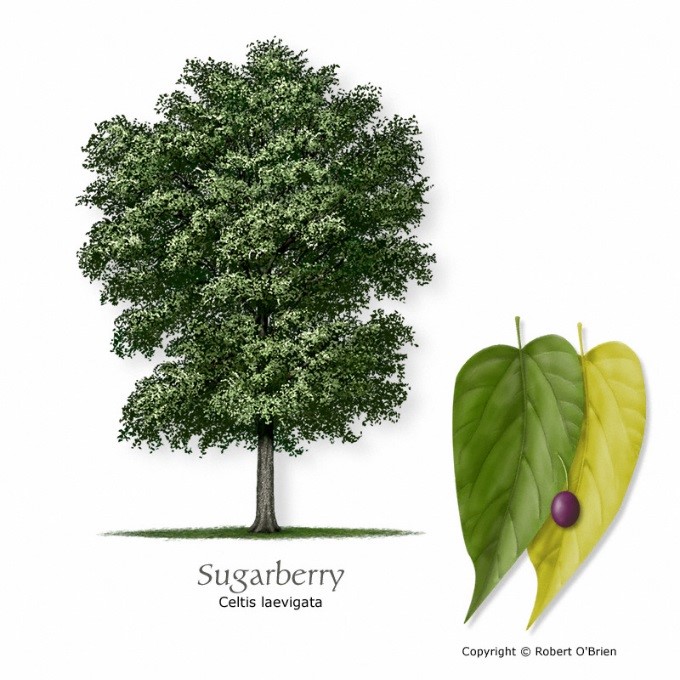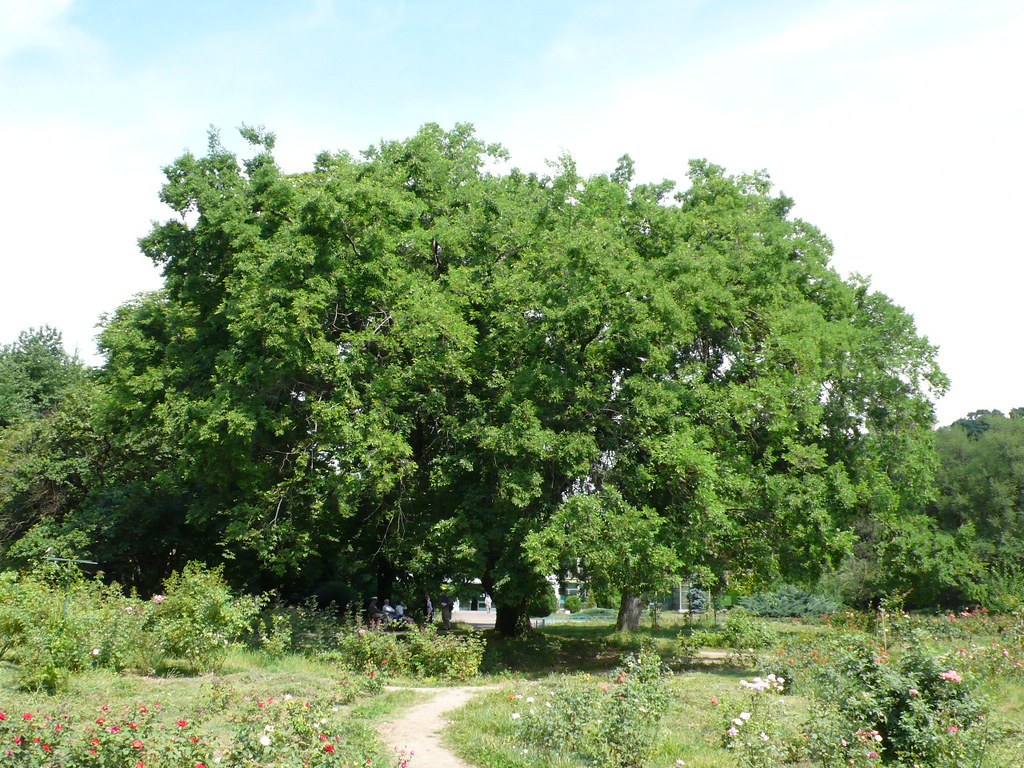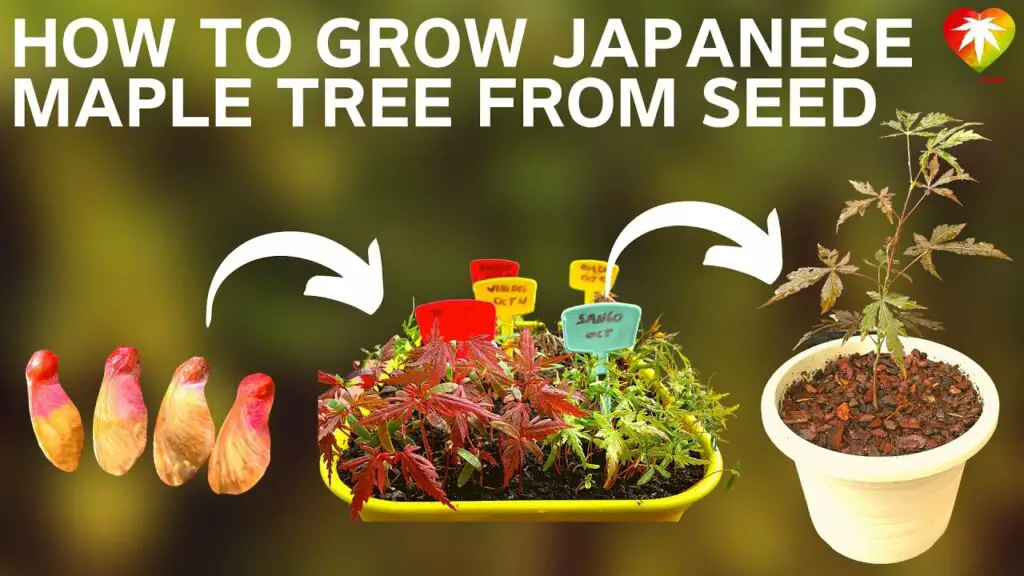Hackberry trees are a type of deciduous tree that is native to North America. There are many different species of hackberry trees, and they can be found in a variety of habitats from woodlands to prairies. Hackberry trees are often used as ornamental plants or shade trees due to their attractive foliage and hardiness.
However, there are some potential drawbacks to planting hackberry trees, and it is important to be aware of these before making a decision to plant one. One potential downside of hackberry trees is that they can be susceptible to a number of diseases and pests. These include powdery mildew, leaf spot, aphids, scale insects, and borers.
Hackberry trees can also be messy, as they drop a large number of fruits each year. These fruits can attract animals such as deer, raccoons, and opossums which may then cause damage to the tree or your property. Finally, hackberry trees produce lots of pollen which can trigger allergies in some people.
If you’re looking for a hardy, fast-growing tree, the hackberry might be a good option for you. These trees are tolerant of a wide range of conditions and can thrive in both sun and shade. Hackberries also produce small, dark berries that are popular with birds.
However, there are a few things to consider before planting hackberries on your property. These trees can be messy, as the berries often drop and stain surfaces beneath them. Hackberries also have shallow root systems that can damage sidewalks or driveways if they aren’t properly maintained.
Should I Plant a Hackberry Tree?
If you’re looking for a shady tree to add to your landscape, hackberry (Celtis occidentalis) might be the right choice. This hardy tree is tolerant of a wide range of soils and conditions, making it easy to grow. Plus, Hackberry provides food and shelter for wildlife.
Here’s what you need to know about growing hackberry trees. Hackberry is a deciduous tree that can reach up to 50 feet tall at maturity. It has a rounded crown with spreading branches.
The dark green leaves are 3-5 inches long and have a rough texture. They turn yellow in the fall before dropping off the tree. Small, greenish-white flowers bloom in spring, followed by dark purple berries that ripen in late summer or early fall.
Hackberry fruit is enjoyed by birds and other wildlife but not humans – it’s too tart for most tastes! This tree grows best in full sun but can tolerate some shade. It’s adaptable to a variety of soil types as long as the soil is well-drained.
Hackberry is drought tolerant once established, but young trees will need regular watering during dry periods until they’re fully rooted into the ground. hackberry makes an excellent specimen plant or street tree because of its uniform shape and size. It can also be used in mass plantings or as part of a naturalized area since it provides food and shelter for birds and other animals.
Where Should I Plant Hackberry?
If you’re looking for a fast-growing, hardy tree that provides shade and beauty, hackberry is a great choice. But before you purchase and plant hackberry trees, it’s important to know a little bit about their growth habits and requirements. Hackberries are large deciduous trees that can grow up to 50 feet tall with a spread of 30 feet or more.
They have dark green foliage that turns yellow or orange in the fall, small purple fruits that ripen in late summer, and beautiful gray bark with cork-like ridges. Hackberries tolerate a wide range of soils and growing conditions, but they prefer full sun and moist, well-drained soil. If you live in an area with clay soil, planting hackberry on a raised mound or berm will help improve drainage.
Hackberries are also tolerant of drought once they’re established. When choosing a location to plant hackberry, make sure there’s plenty of room for the tree to grow. Hackberries have aggressive root systems that can damage sidewalks, driveways, and foundations if planted too close.
A good rule of thumb is to plant hackberries at least 20 feet away from structures.
Should I Cut Down My Hackberry?
If you have a hackberry tree on your property, you may be wondering if you should cut it down. Here are some things to consider before making a decision: The hackberry tree is a hardy species that can tolerate a wide range of conditions.
It is often used as an ornamental tree because of its attractive leaves and berries. Hackberry trees can grow to be quite large, so if you are limited in space, cutting them down may be the best option. If the tree is located in an area where it could potentially cause damage (e.g., near power lines or buildings), then removal may be necessary.
Otherwise, hackberry trees generally require little care and can live for many years. So, unless there is a specific reason to remove it, you may want to keep your hackberry tree!
Do Hackberry Trees Make a Mess?
Hackberry trees are known for their messy fruit, which can make a mess on sidewalks, driveways, and patios. The trees are also messy when it comes to dropping leaves and twigs. If you have a hackberry tree in your yard, be prepared to do some cleanup each fall and spring.

Common Hackberry Tree Problems
If you’re thinking about planting a hackberry tree, there are a few things you should know. Hackberry trees are susceptible to a number of problems, including leaf spot, canker, and scale. Here’s a closer look at each of these common hackberry tree problems:
Leaf Spot: The leaf spot is caused by a fungus that attacks the leaves of the hackberry tree. The symptoms of leaf spots include small brown or black spots on the leaves. If the infection is severe, the leaves may turn yellow and drop off. To prevent leaf spots, choose a well-drained location for your hackberry tree and avoid overhead watering.
Canker: Canker is another fungal disease that affects hackberry trees. Canker appears as sunken areas on the bark of the tree. The infected bark may be discolored or cracked. Cankers can kill branches and even entire trees if it’s not treated promptly. To prevent canker, choose a healthy hackberry tree from a reputable nursery and avoid wounding the bark.
Scale: Scale is an insect that feeds on the sap of plants, including hackberry trees. Scale appears as small bumps on the stems and leaves of the plant. If left untreated, the scale can weaken and even kill hackberry trees.
Are Hackberry Trees Invasive
Are Hackberry Trees Invasive? The hackberry tree is a common sight in many parts of the United States. Its hardy nature and ability to thrive in a variety of climates make it a popular choice for landscaping.
However, there is some debate about whether or not hackberry trees are invasive. There are several reasons why hackberry trees might be considered invasive. One is that they can spread quickly and easily from seedlings.
Hackberry trees also produce a lot of berries, which can attract birds and other animals that then spread the seeds elsewhere. Additionally, the roots of hackberry trees can sometimes damage sidewalks, driveways, and other structures. Despite these potential problems, hackberry trees are not currently listed as an invasive species by the US Fish and Wildlife Service or any other federal agency.
That said, it’s always important to do your research before planting anything in your yard to make sure it won’t cause problems down the line.
Do Hackberry Trees Kill Other Trees
Yes, hackberry trees can kill other trees. They are known to be very aggressive and will often strangle or girdle other trees in their quest for sunlight. Hackberry trees are also very allelopathic, meaning they produce chemicals that inhibit the growth of other plants nearby.
So not only will they physically damage other trees, but they will also release chemicals that prevent those trees from being able to grow properly.
Hackberry Tree Root System
The hackberry tree is a deciduous tree that is native to North America. It is also known as the American Hackberry, Netleaf Hackberry, or Common Hackberry. The scientific name for the hackberry tree is Celtis occidentalis.
The hackberry tree grows to be about 50 feet tall and has a trunk diameter of about 2-3 feet. The leaves of the hackberry tree are about 3-6 inches long and 1-3 inches wide. They are simple, alternate, and have serrated margins.
The upper surface of the leaves is dark green and the lower surface is lighter green. The flowers of the hackberry tree are small, greenish-white, and borne in clusters. The fruit of the hackberry tree is a drupe that is about ¼ inch in diameter.
It is dark purple or black when ripe and has a sweet taste. The root system of the hackberry tree consists of a taproot with lateral roots. The taproot grows downward into the soil and anchor’s tree in place.
Lateral roots spread out from the sides of the taproot and help to absorb water and nutrients from the soil.
How to Grow Hackberry Tree from Seed
Growing a hackberry tree from seed is not as difficult as it might sound. With a little bit of patience and the right conditions, you can successfully grow a hackberry tree from seed. Here are the steps to follow:
- Collect seeds from a hackberry tree in late summer or early fall. Make sure the seeds are ripe and ready to be harvested.
- Plant the seeds in well-draining soil in an area that receives full sun. Hackberry trees prefer sunny locations.
- Keep the soil moist but not wet during the germination process, which can take up to several weeks. Once the seedlings emerge, water them regularly so they don’t dry out.
- Fertilize young hackberry trees monthly with a balanced fertilizer until they reach maturity (around 5 years old). At that point, you can fertilize them once or twice per year instead of monthly.
Hackberry Tree Facts
The hackberry tree is a deciduous tree that is native to North America. It is also known as the nettle tree, crowberry, or American hackberry. The scientific name for the hackberry tree is Celtis occidentalis.
The hackberry tree grows to be about 50 feet tall and has a trunk diameter of about 2 feet. The bark of the hackberry tree is gray and smooth with corky ridges. The leaves of the hackberry tree are simple and alternate with serrated margins.
The flowers of the hackberry tree are small and greenish-white in color. They grow in clusters and bloom in the springtime. The fruit of the hackberry tree is a drupe that is dark red or purple in color.
It ripens in mid-summer and is eaten by birds and other animals.
Hackberry Tree Growth Rate
The hackberry tree is a deciduous tree that is native to North America. It is also known as the nettle tree, American Hackberry, and the Northern Hackberry. The hackberry tree can grow to a height of 40-60 feet and has a trunk diameter of 1-2 feet.
The leaves are alternate, simple, and ovate with serrated margins. The flowers are small, greenish-white, and borne in clusters. The fruit is a drupe that is dark red or purple in color and about 1/3 inch in diameter.
The hackberry tree grows at a moderate rate of 13-24 inches per year. It prefers full sun but can tolerate partial shade. It prefers moist, well-drained soils but is tolerant of dry conditions.
Hackberry trees are susceptible to several diseases including leaf spot, powdery mildew, canker, and root rot.
Hackberry Tree Texas Lifespan
The hackberry tree is a common sight in Texas. It’s a hardy tree that can withstand harsh conditions and has a lifespan of 20 to 30 years. The tree gets its name from the small, dark berries it produces.
These berries are edible and have a sweet, tart flavor. birds and other animals eat them, and they’re also used to make jelly and wine. The hackberry tree is easy to identify because of its distinctive bark.
The bark is rough and scaly, with a cork-like texture. It’s light gray or tan in color and often has darker streaks running through it. The leaves of the hackberry tree are simple, alternate, and ovate-shaped.
They’re dark green in color and have smooth edges. The trees produce small, greenish-white flowers in the springtime followed by dark berries in the summertime. If you’re looking for a hardy tree to add to your landscape, consider the hackberry tree. It’s sure to provide you with years of enjoyment!
Frequently Asked Questions:
Is hackberry a strong tree?
Yes, hackberry trees are generally considered strong and hardy. They are known for their durability and resistance to various environmental conditions, making them a good choice for landscaping and urban areas.
Is hackberry wood expensive?
No, hackberry wood is not considered expensive. It is generally more affordable compared to some other hardwoods.
Is A hackberry a fruit?
Yes, a hackberry is a fruit. It is a small, edible berry that grows on hackberry trees (genus Celtis) and is often used by birds and some mammals as a food source.
Conclusion
When it comes to deciding whether or not to plant a hackberry tree, there are pros and cons to consider. On the plus side, hackberry trees are known for being tough and adaptable, able to thrive in a variety of soil types and conditions. They’re also fast-growing, providing shade and privacy sooner than many other trees.
However, hackberry trees can be messy, dropping leaves, berries, and twigs throughout the year. They’re also susceptible to pests and diseases, which can cause problems for both the tree and your property. Ultimately, whether or not a hackberry tree is right for you will come down to personal preference and your specific circumstances.
Related Topic:
Tropical Forests’ Secret Weapon: Eco-Heroes of Carbon Storage
 Dr Ahsanur Rahman, PHD
Dr Ahsanur Rahman, PHD
How to Plant a Maple Tree Seed: A Step-by-Step Guide
 Dr Ahsanur Rahman, PHD
Dr Ahsanur Rahman, PHD









